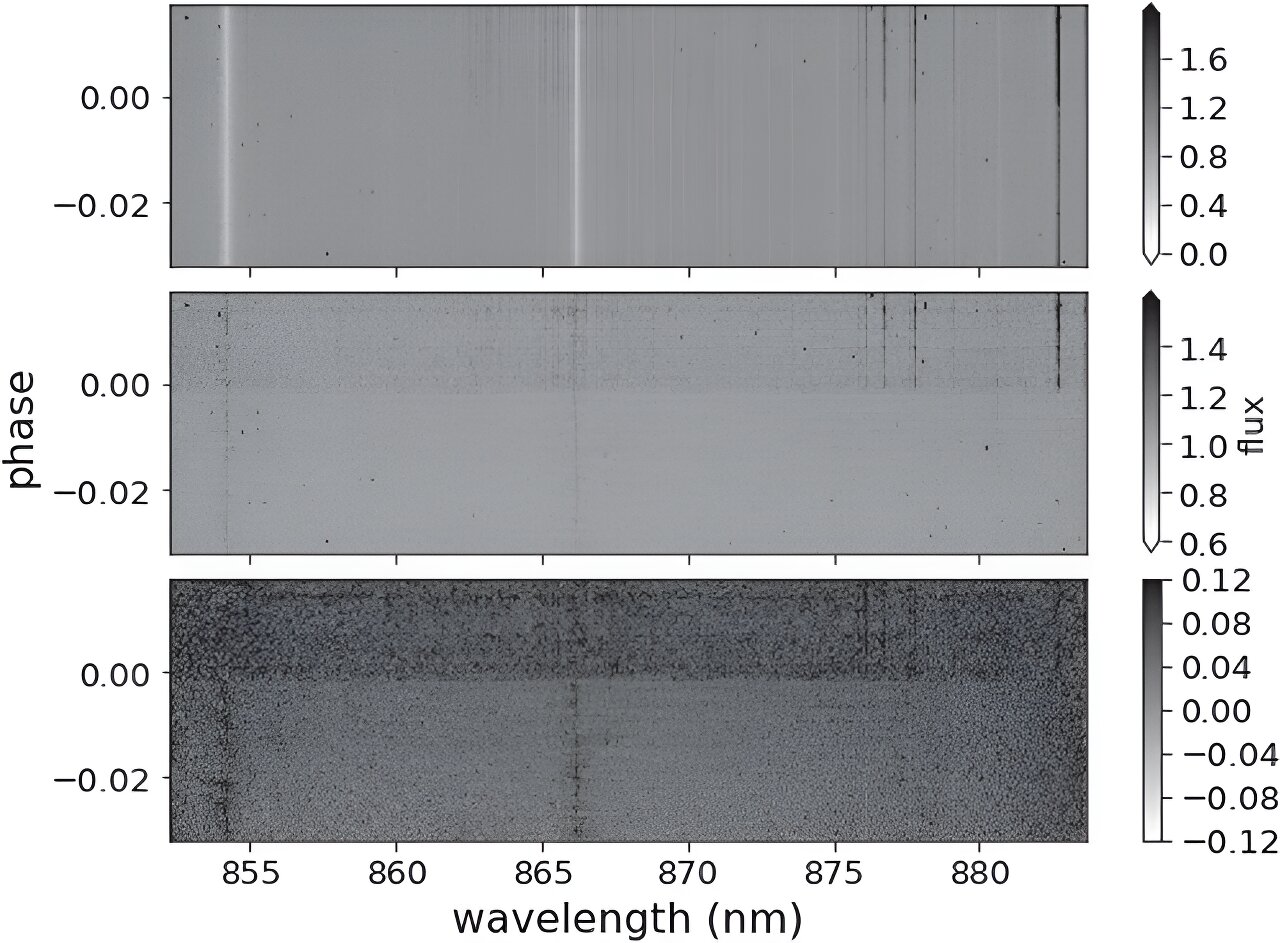
Astronomers discover 'thermometer' molecule on WASP-31b exoplanet: Why is it important?
Using high-resolution spectral observations, a team of scientists has confirmed the presence of chromium hydride in the atmosphere of the exoplanet WASP-31b, making it possible to use this temperature-sensitive molecular species as a "thermometer" to determine exoplanet temperatures and other characteristics.
Chromium hydride (CrH) is a relatively rare and particularly temperature-sensitive molecule that has not previously been found on any exoplanet. According to the study's author, astronomer Laura Flagg, it can serve as a "thermometer for stars" because it is most commonly found in a narrow range between 1,200 and 2,000 °K.
Laura Flagg and her team used these and other metal hydrides to determine the temperatures of cool stars and brown dwarfs. According to her, chromium hydride could theoretically do the same for hot exoplanets like Jupiter, which are comparable in temperature to brown dwarfs, if those molecules are present in the exoplanet's atmosphere. Previous low-resolution studies suggested they were there, and now Flagg and her team have confirmed it.

Flagg said the eventual detection of metal hydrides in WASP-31b is an important advance in understanding the atmospheres of hot giant planets, although the discovery does not provide new information about a single planet. Discovered in 2011, WASP-31b orbits the F5 star once every 3.4 days. It has an extremely low density, even for a giant planet, and the new study confirms that the equilibrium temperature is 1400°K, which corresponds to the range of chromium hydride.
"Chromium hydride molecules are very sensitive to temperature," Flagg said. "At higher temperatures, we only see chromium. And at a lower temperature, it turns into other substances. Therefore, there is only a certain temperature range, about 1200 to 2200 °K, where chromium hydride occurs in large quantities.”
Flagg said that in our solar system this molecule is found only in sunspots; the sun is too hot (about 6000 °K on the surface), and all other objects are too cold for it.
In her research, Flagg uses high-resolution spectroscopy to detect and analyze the atmospheres of exoplanets by comparing the total light of the system when the planet is on the side of the star and when the planet is in front of the star, blocking some of the star's light. Certain elements block more light at certain wavelengths and less at others, which allows us to determine which elements a planet is made of.
"The high spectral resolution means we have very precise wavelength data," Flagg said. "We can get thousands of different lines. We combine them using various statistical methods using a template (a rough idea of what the spectrum looks like) and compare it to the data by fitting it. If the match is good, then there is a signal. We try all different templates, and in this case chromium hydride gave the right signal.”
- Related News
- Wheel of Death: new method will help astronauts stay fit in low gravity
- Due to anomalies of Orion spacecraft, lunar exploration program may be delayed for years։ NASA
- TAO Observatory: World's highest telescope to study evolution of galaxies and exoplanets
- Powerful M9.5 solar flare causes radio blackout in Pacific Ocean
- What will happen to the Earth if the Moon disappears?
- Key to conquering the Red Planet: Why is NASA studying solar storms on Mars?
- Most read
month
week
day
- Digital Julfa Network is launching a pan-Armenian centre in the metaverse, on the Fastexverse virtual platform 988
- Xiaomi unveils exclusive Redmi Note 13 Pro+ dedicated to Messi and Argentina national team 868
- Sparkles: Boston Dynamics unveils a furry robot dog that can dance (video) 831
- Is there a ninth planet in the solar system? Scientists find new evidence 701
- What will happen to the Earth if the Moon disappears? 690
- Smartphone catches fire in child's hand in Russia 675
- How to understand how protected a smartphone is from water and dust? 668
- iPhone 16 may get colored matte glass back panel, 7 colors 668
- Internet 500 times faster than 5G tested in Japan: It allows to transfer five movies in HD resolution in one second 662
- World's largest 3D printer was created in USL It prints 29 meter-long structures 655
- Archive
